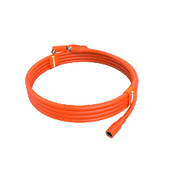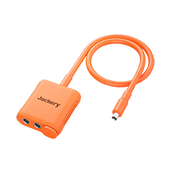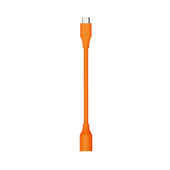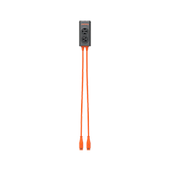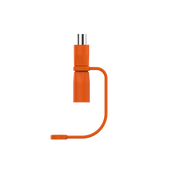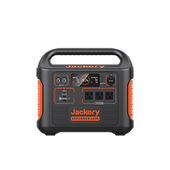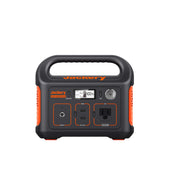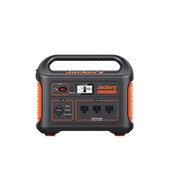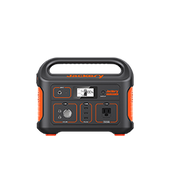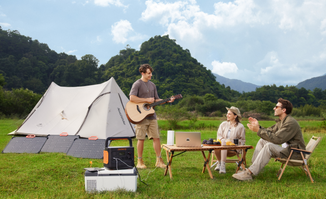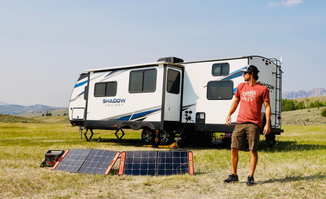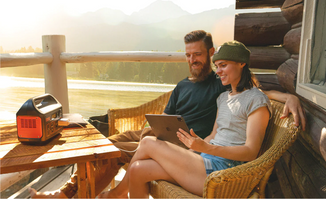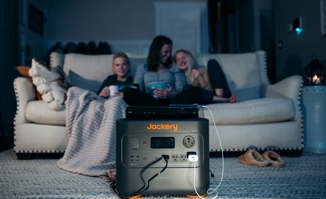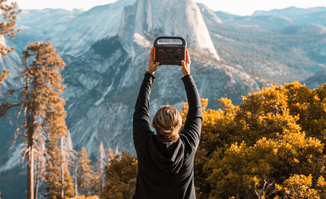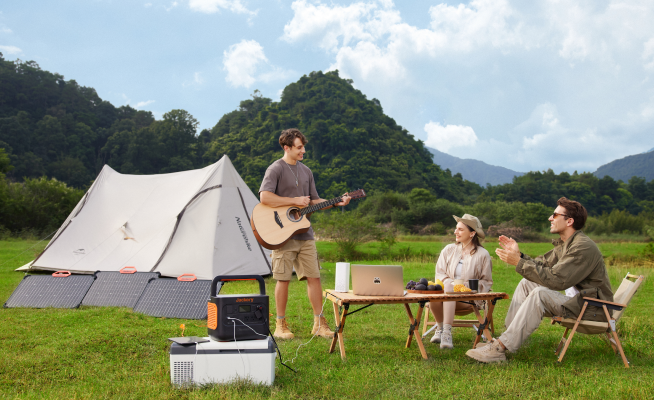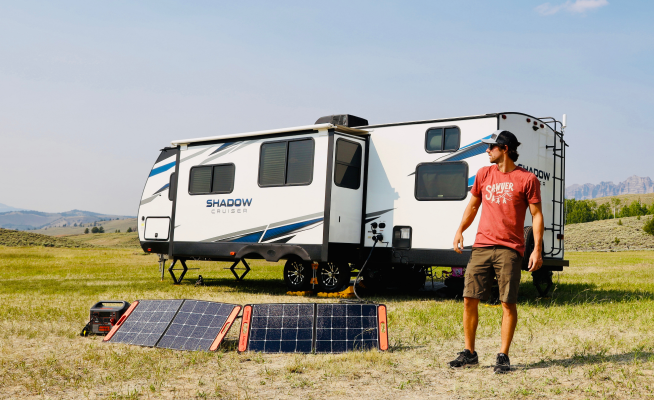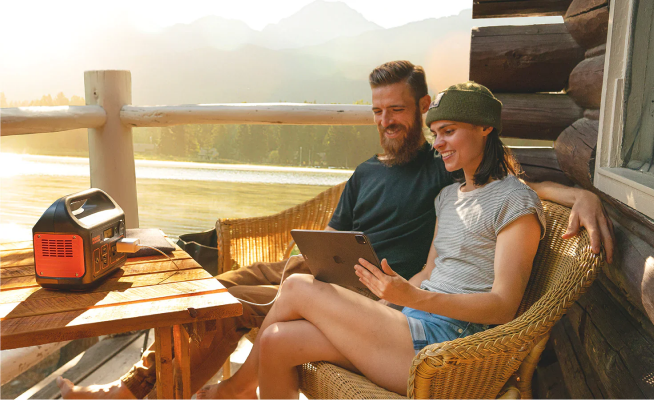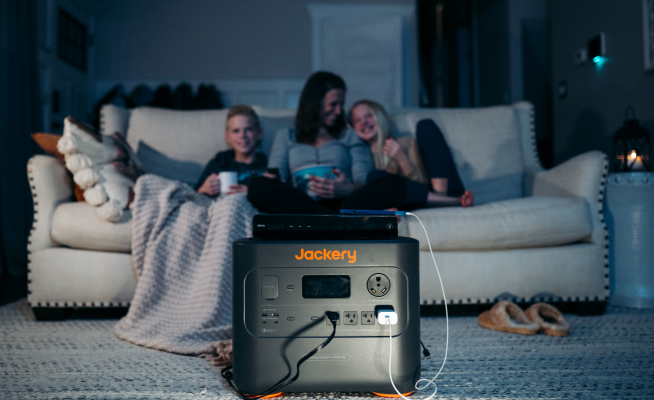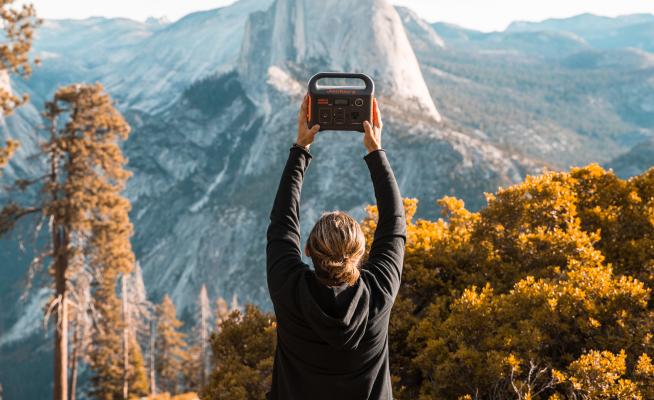Ultimate Guide: How to Live Off The Grid
Living off-grid is the perfect escape from the chaos of urban life and enjoying a sustainable, self-sufficient lifestyle. Switching from a traditional to an off-grid lifestyle will help you reconnect with what matters – freedom, nature, and family.
But let's be honest; living off the grid isn't all sunshine and rainbows. You must work, develop skills, and have the right resources to make your dream come true. So, how to live off the grid? First things first, you need a reliable power source to live independently.
Jackery Solar Generators are among the most efficient and powerful off-the-grid solar systems. They consist of SolarSaga Solar Panels and Explorer Portable Power Station to convert sunlight into electricity and power appliances.

In this article, we will discuss what off-grid living is, its main types, and how you can start your off-grid journey.
What Does Living Off The Grid Mean?
Technically, off-the-grid living means disconnecting your home electrical connection from the local power grid. You need your own power source to charge mobile phones and run home appliances like refrigerators, AC, heaters, etc., especially when you are away from the grid.
People wanting to be self-sufficient and live in harmony with nature often choose off-grid living. That means they will focus on generating their own power using solar, wind, or hydropower systems.
However, it's important to note that off-grid homesteaders do not isolate themselves from society. On the contrary, the primary goal behind living off the grid is to reduce reliance on public utilities and live a sustainable life. In this section, we will discuss the pros and cons of living without a grid connection.
Why Choose To Live Off The Grid?
Global warming is turning cities into ovens, making people adopt the off-grid lifestyle to protect the environment. In addition to reducing environmental impact, it helps lower your high utility bills. Below are a few more reasons to live off the grid.
- Low Carbon Footprint:Living off the grid means you rely more on renewable energy and less on non-renewable. Sustainable practices help you produce less waste and be self-sufficient.
- Reduce Stress and Anxiety:Connecting with nature will help you feel relaxed and less stressed. This way, you can improve your mental and physical health.
- Boost Confidence:Learning new problem-solving skills to survive without public utilities boost confidence and improves self-sufficiency.
- Minimalism:Cutting the connection from modern power sources and choosing renewable sources involves simplifying one's life and possessions, leading to a greater sense of fulfillment and purpose.
Pros And Cons Of Living Off The Grid
Before you understand how to live off the grid, it's vital to understand the advantages and drawbacks of the lifestyle. Weighing the pros and cons carefully will help you make a quick decision.
Here is a quick breakdown of the pros and cons of an off-grid lifestyle.
|
Pros |
Cons |
|
Save money |
High initial costs |
|
Sustainable lifestyle |
Lots of work is involved |
|
Protection from power outages |
|
Pros
- Save Money:Electricity prices are soaring, forcing people to look for alternative power solutions. Living off-grid will help you save money and reduce the costs related to utility, food, and general consumption.
- Sustainable Lifestyle:As it helps you lower the carbon footprint, it is an eco-friendly lifestyle.
- Protection From Power Outages:When you use electricity from the grid, you are entirely dependent on it. You are left in the dark when the power goes out. Transitioning to off-grid living will wash away the worries about power outages.
Cons
- High Initial Cost:Setting up your energy source, water supply, and waste disposal will require a high initial expense.
- Lots of Work is Involved: When you go for an off-grid living, you have to do a lot of work, like maintaining power and water sources.
Proper planning will help you make your off-the-grid living experience more comfortable.
The Types Of Living Off The Grid

Going off the grid can help you become more independent and less reliant on public utilities. Here are a few different types of living off the grid.
Extreme
Extreme off-grid living always comes out of dire circumstances. For instance, when wildfires in California led to the destruction of homes, people found themselves living off the grid.
Also known as "roughing it," the extreme lifestyle means living in a shelter without access to standard electricity hookups or running water. In this case, you will have to look for a potable river or lake nearby.
For power or electricity sources, you can use a solar generator to harness the power of solar energy for charging the appliances. It is the cheapest yet most challenging type of off-grid living.
Partial
Unlike extreme off-grid living, partial off-grid living is the most comfortable and attainable type for most people. Its primary aim is to significantly reduce dependence on municipal resources while improving self-sufficiency.
In this case, you will have a septic system rather than connecting with a public sewer system. Similarly, instead of using electric heaters, you will use wood burners to heat your home during chilly winters.
Modern
One of the most popular off-the-grid methods suitable for off-grid enthusiasts is modern living. Not only can you enjoy modern conveniences, but you can also implement ways to remain self-sufficient. Even though the initial cost of contemporary living is high, you can reduce your expenses over time.
Also known as fully off-grid living, it allows you to have a variety of power sources, modern amenities, and clean water. People living in the contemporary off-grid style use modern appliances for cooking food. Some people even opt for raising livestock and cultivating their own food.
Living Off The Grid Essentials
In its most basic context, living off-grid requires you to procure four essential elements: shelter, power, water, and food.
Shelter
When it comes to answering "how to live off-grid," the first important thing you must look for is a reliable shelter. An RV, a cabin in the woods, or a tiny home away from civilization can act as an ideal off-grid home.
Power
Now comes the most crucial thing – power – that will help you to heat your space in winter, cook food, and communicate with your loved ones. Solar-powered generators are the most reliable powering sources for off-grid electrical appliances.
A portable and lightweight Jackery Solar Generator allows you to generate power whenever and wherever you need it. The solar-powered system consists of foldable solar panels and a high-capacity power station.

Jackery Solar Generator 2000 Pro, Jackery Solar Generator 1500 Pro, and Jackery Solar Generator 1000 Pro are some of the most popular choices for off-grid enthusiasts.
Water
Next, you need to ensure you have easy access to a steady stream of potable water for bathing, drinking, and cleaning. You can choose a location with nearby underground water, stream, or river. However, you have to invest in a central filtration system to purify water before using it.
Food
When you truly go off-grid, you will have to focus on gardening, foraging, farming, and fishing. Many people prefer growing and harvesting their own food to become self-sufficient, while many others stock up large quantities of dry goods and non-perishable food items as a backup.
Remember, off-grid living is all about being self-sufficient in the outdoors. Planning prior to going off-grid will help you avoid any unanticipated consequences.
How To Live Off The Grid?
Now that you know the basics of off-the-grid living, here is "how to go off-grid."
Below we will discuss the simple steps to living off the grid.
Find the Right Location
First, you need to choose the location for your off-grid living. Buying the wrong land can impede your ability to live sustainably. The site should always be located away from the stress of urban life. In addition, the land should offer easy access to soil, water, open space, and trees. A natural water source, like a spring, creek, or river, can be an additional benefit.
Build the Smallest Home Possible
Tiny homes are not only trendy and cute, but they are also an efficient and logical investment. They are less intrusive on land, need less water, are easier to heat/cool, and require less energy. Always access your current lifestyle and identify what you need to live comfortably.
Build or Buy Sustainable Shelter
Now that you've identified your needs and finalized your location, it's time to build or buy a sustainable shelter. Your off-grid shelter should be efficient, durable, and comfortable. You can either build a cabin or buy a pre-built tiny house to start your off-grid living.
Set Up a Reliable Water System
Next, you need to set up a reliable water system. You can install a rainwater catchment system, drill a well, or collect water from nearby lakes or streams.
Generate Your Own Power
The three popular off-grid energy sources are solar, wind, and hydropower. The best way to generate power is by using solar systems or generators. Different sizes and types of Jackery Solar Generators are available in the market. You can choose solar panels and power station combinations that meet your power needs and space constraints.
Grow Your Own Food
Next, you must learn to grow (or raise) your own food. Start by creating a garden and planting vegetables, fruits, and herbs. Consider raising chickens, goats, and other livestock for eggs, meat, and milk. Even if you do not have a green thumb, you can consider stocking up on non-perishable food items.
Learn Essential Skills
Living off the grid demands a lot of essential skills, from plumbing to gardening and animal husbandry. Invest in essential tools and equipment in addition to attending workshops to learn about the off-grid.
Transitioning from on-grid to off-grid can be a rewarding and challenging experience. Adequate planning, preparation, and commitment can help you create a self-sufficient and sustainable life.
Jackery Empowers Living Off The Grid
Off-grid living is one of the best ways to escape the crowd and hustle-bustle of urban life. However, it's essential to invest in the right tools. Designed by keeping off-grid living in mind, Jackery's portable solar generators offer a reliable source of clean energy.
Jackery Solar Generators consist of SolarSaga Solar Panels to capture energy from the sun and Explorer Portable Power Stations to store power for later use. The generator can power many devices, including but not limited to lights, power tools, electric grills, etc.
But why should you choose Jackery Solar Generator for your off-grid living needs? For adventurers, Jackery Solar Generator is an eco-friendly and highly efficient power source that can convert maximum sun's energy into electricity. Plus, the generator is easy to use and requires no maintenance, making it a reliable choice for off-grid enthusiasts.
Now, let us dive deep into some of the most popular Jackery Solar Generators.
Jackery Solar Generator 2000 Pro
With a high battery capacity of 2160 Wh, Jackery Solar Generator 2000 Pro can power most large appliances. Jackery Explorer 2000 Pro Portable Power Station and 6x SolarSaga 200W Solar Panels feature fast charging capabilities, making it one of the most reliable options for off-grid homes.
Jackery Solar Generator 1500 Pro
If you're looking for a solar generator that can charge most off-grid appliances, Jackery Solar Generator 1500 Pro could be an ideal option. You can power the Explorer 1500 Pro Power Station within 2 hours using 6x SolarSaga 200W Solar Panels.

Jackery Solar Generator 1000 Pro
The bundle of Jackery Explorer 1000 Pro Portable Power Station and SolarSaga 200W Solar Panels features multiple ports and more than fast charging capability. You can charge the battery within 1.8 hours using 4x SolarSaga 200W Solar Panels.
Jackery Solar Generators are a dynamic solar power solution that will keep your gear charged during off-grid living. You can plug the solar panels into the power station to charge it entirely within a few hours. Post charging, you can use the generated energy to recharge your off-grid appliances.
How To Live Off The Grid FAQs
Choosing off-grid as your new lifestyle does not have to be daunting. If you are still perplexed about how to live off the grid, here are a few frequently asked questions.
How much does it cost to live off the grid?
Living off the grid depends on several factors, such as property size, land location, initial investment, and how self-sufficient you want to be. Here is an estimated breakdown of the costs required to live off the grid.
|
Cost |
Low |
Average |
High |
|
Land |
$2000 |
$20,000 |
$200,000 |
|
Housing |
$500 |
$50,000 |
$250,000 |
|
Power |
$8000 |
$35,000 |
$70,000 |
|
Cooking/heating |
$100 |
$300 |
$3000 |
|
Water |
$1500 |
$9000 |
$15,000 |
|
Septic tank |
$3000 |
$5000 |
$10,000 |
|
Garden |
$1200 |
$3500 |
$10,000 |
|
Total |
$16,300 |
$122,800 |
$558,000 |
Is it possible to live off the grid cheaply?
Yes. Below are a few ways to help you live off the grid cheaply.
- Build a mobile or tiny home instead of a traditional house.
- Use cost-effective alternative sources of energy, such as solar generators.
- Collect and use rainwater for drinking, cooking, and cleaning.
- Use composting toilets and greywater systems to reduce waste and water usage.
How can I go off the grid with solar panels?
Solar panels are a great way to go off-grid and enjoy renewable energy. However, you must combine them with portable power stations to charge appliances using the generated power. You can choose Jackery Solar Generator that combines Explorer Portable Power Station and SolarSaga Solar Panels to convert solar energy into electricity for your off-grid home.

Final Thoughts
Now that we have covered how to live off the grid in detail and the essentials required, you are set to embark on your new off-grid journey.
Investing in an off-the-grid solar system is one of the best ways to make your off-grid living less stressful and thrilling. Not only can you cut off your high utility bills, but you can also enjoy an independent and sustainable life.
Jackery Solar Generators are one of the ideal solar-powered solutions that can help you charge most small and large appliances. It is easy to set up and an eco-friendly solution for powering home and outdoor devices, so you never have to worry about power.
Don't forget to sign up for the Jackery newsletter to get the latest product news, promotional offers, and other information in your inbox.
Disclaimer:
The runtime mentioned for appliances powered by Jackery is for reference only. Actual runtime may vary under different conditions. Please refer to real-world performance for accurate results.






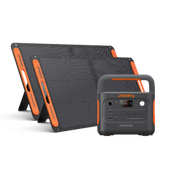


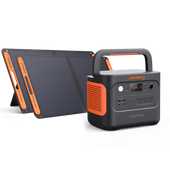

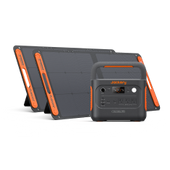
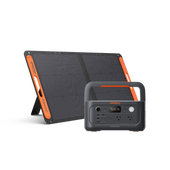
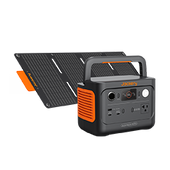
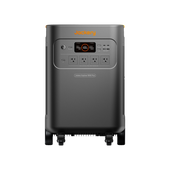
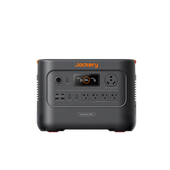
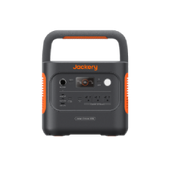
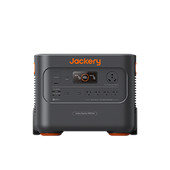
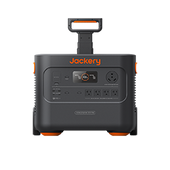

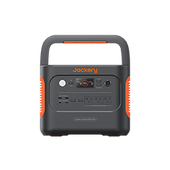
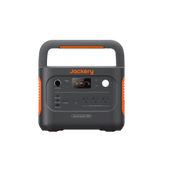
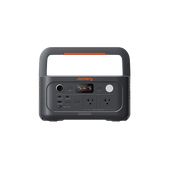

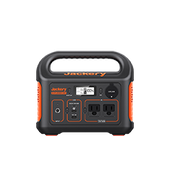
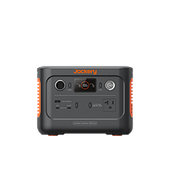
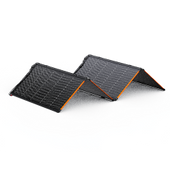
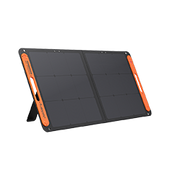

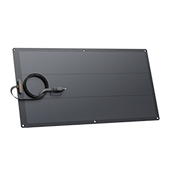
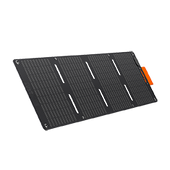
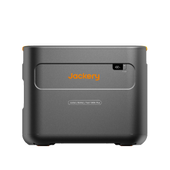
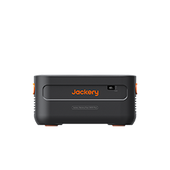
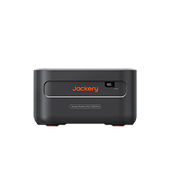
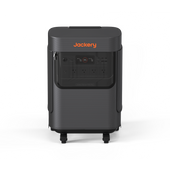
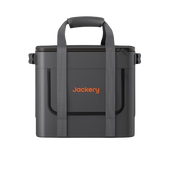
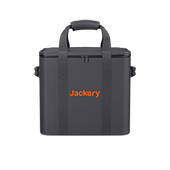
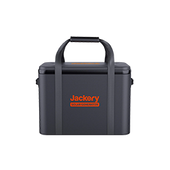
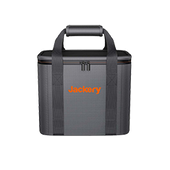
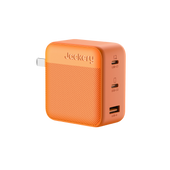
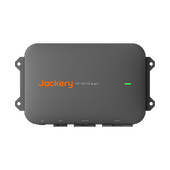
![[Add-on] Jackery Manual Transfer Switch for Explorer 5000 Plus](http://ca.jackery.com/cdn/shop/files/add-on-jackery-manual-transfer-switch-for-5000-plus-240V.webp?v=1757043692&width=170)
